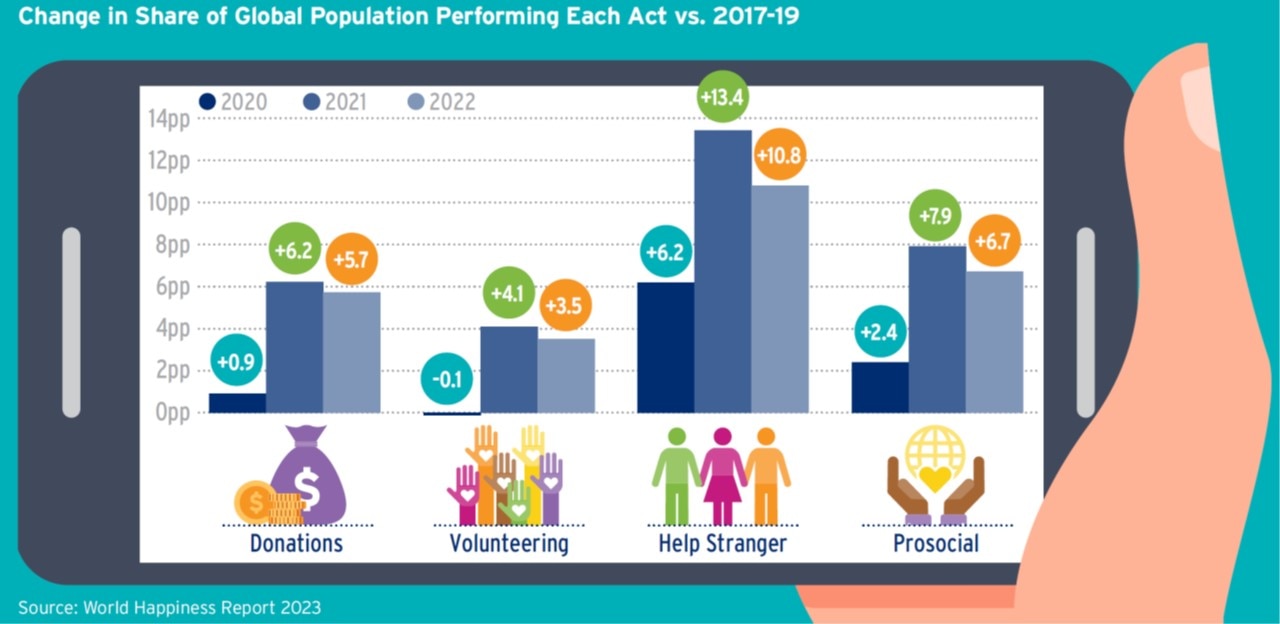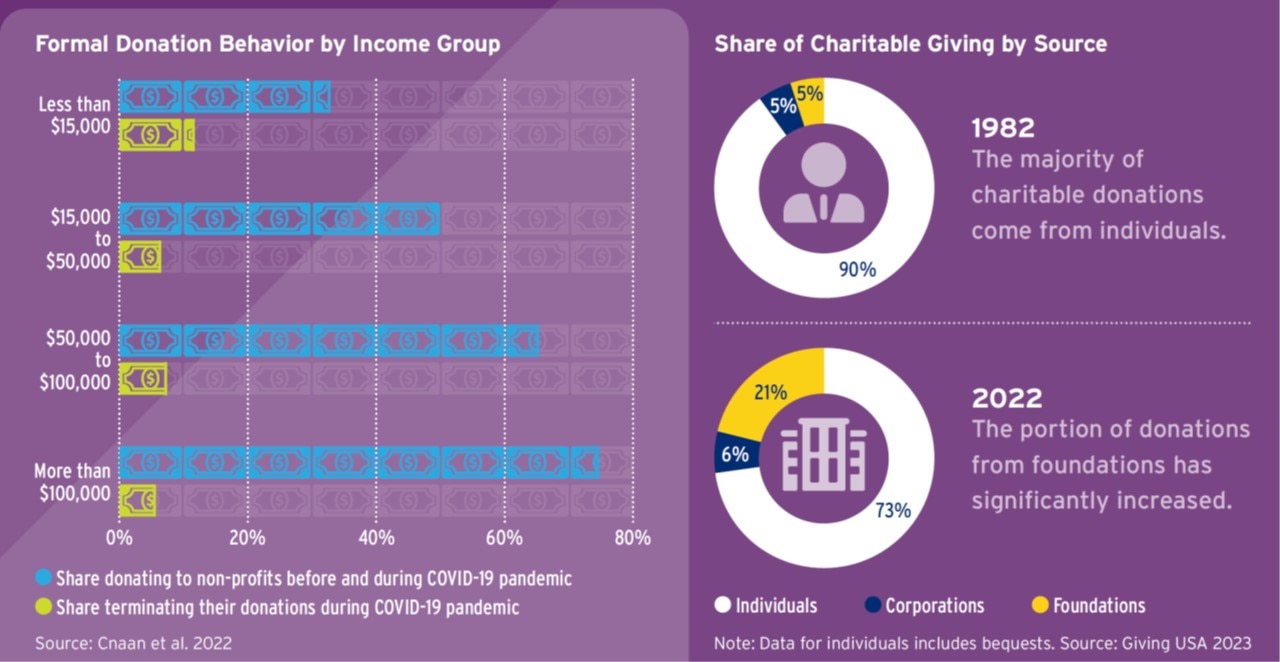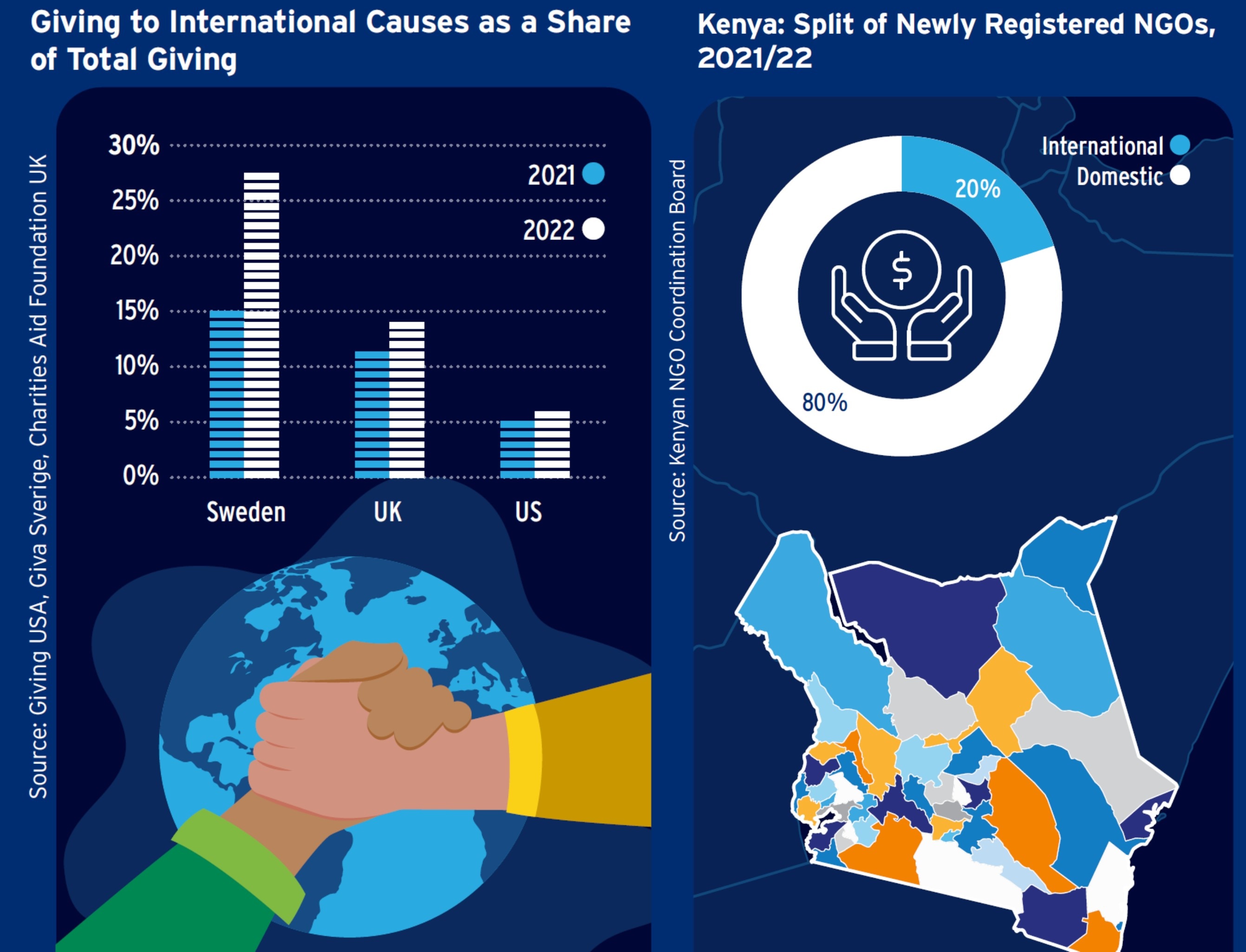Philanthropy and the Global Economy v3.0

Philanthropy makes an extraordinary but underappreciated contribution to the global economy each year. Despite economic headwinds, 2022 was no exception.
Aggregated at the global level, charitable sentiment is blossoming. Behaviors like donating and volunteering have boomed in the last three years, and evidence is starting to suggest that this is not a temporary response to the pandemic, but a shift towards a new “normal.” The story of the total stock of philanthropy in the global economy is both less positive and less uniform. 2022 brought a mixed global picture: The U.S. saw total charitable dollars decline after a pandemic-related boom, while giving rebounded in the UK, driven largely by donors’ response to the crisis in Ukraine. If there is any uniform feature of the total stock of philanthropy in recent years, it is volatility — total charitable receipts have bounced between growth and decline in recent years, albeit at different times in different countries.
Two key themes emerge from our review of the latest data on global giving and conversations with a series of experts and nonprofit leaders. After exploring data at the global level, we first zoom in on the U.S. to examine trends in the composition of the donor base. We argue that philanthropy is becoming more affluent and more institutional, with consequences for both society and individual nonprofits. Second, we explore the future of cross-border giving. Data suggests that there is growth in the number of donors outside traditionally “philanthropic” countries — like the U.S. and Western Europe — which intersects with an increasing appetite to give to locally-led organizations, both at home and abroad. As a result, the geography of philanthropy is shifting before us, disrupting the paradigm of a linear flow of funds from Global North to Global South as it does so.
As so often happens in philanthropy, these shifts are gradual and not seismic. There is scope for nonprofits and philanthropists alike to prepare for these trends — and perhaps even to alter their evolution. We conclude each chapter of this report with recommendations on how to respond to these trends. For nonprofits, these include building trust with and communicating impact to those who offer smaller donations, as well as financially preparing for a more geographically complex, interlinked web of transactions as donations and spending both shift closer to the communities that nonprofits serve. For philanthropists, recommendations include leveraging networks to connect nonprofits and corporate entities in mutually beneficial partnerships and providing funding with fewer restrictions to allow nonprofits to experiment with technology and innovate in the years ahead.
This Citi GPS report is the third in our Philanthropy and the Global Economy series. It builds upon two previous reports: Opportunities in a World of Transition and Reinventing Giving in Challenging Times. This year’s report is again produced in partnership with Citi Private Bank’s Philanthropic Advisory team and our core group of expert partners. We are also delighted to partner this year with Citi Commercial Bank, colleagues from the Citi Foundation, and an expanded group of experts. We are grateful to the panel of nonprofit leaders who participated in interviews as we conducted the research for this report. We hope that this Citi GPS series continues to highlight the contribution that philanthropy makes to our world and that it can play some small part in driving fruitful partnerships between public, private, and philanthropic sectors.
Charitable Sentiment Remains High
Despite a slight decline in 2022 compared with 2021, pro-social behaviors (e.g., donating, volunteering, and helping a stranger) globally remained significantly above their pre-pandemic averages in 2017-19.

U.S.: An Increasingly Affluent and Institutional Donor Base
the U.S. donor base increasingly skews affluent, with higher-income groups more likely to give and less likely to stop donating before and during the pandemic. The U.S. donor base is also becoming more institutional as chariable giving shifts away from individuals toward corporations and, more substantially, foundations.

Stronger Connections Through Technology
Technology could play a role in replenishing the donor base as it becomes narrower and more institutionalized. Digitally mature nonprofits reported stronger relationships with their stakeholders in a recent survey.

Trends in International Giving
An increase in the share of giving to international causes, particularly to Ukraine, pushed up overall headline figures for chritable giving in Sweden and the UK in 2022. More importantly, nonprofit leaderes we interviewed report a shift is underway to fund more locally-led organizations.
